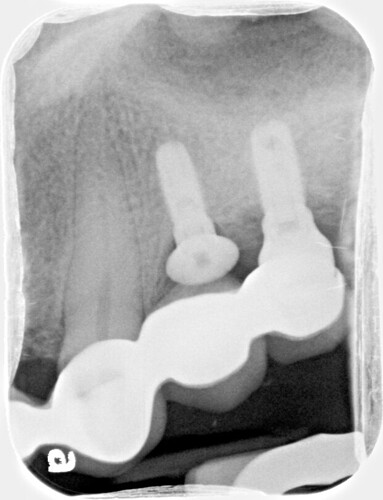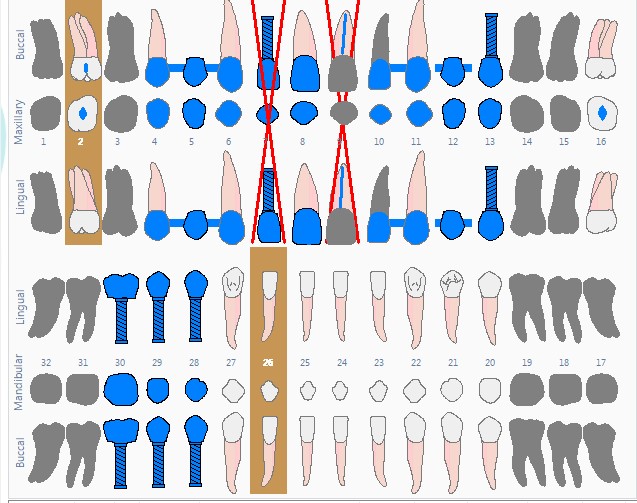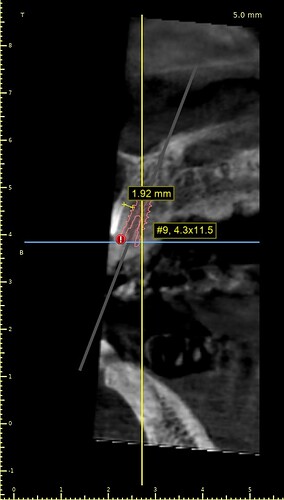Patient is an 89-year old male in good health. He wants two mini implant-supported crowns to replace #7 and #9 so he can play saxophone. He has enough bone volume for standard implants. However, he wants mini implants because of simple procedure, less waiting time, and less expensive. I am not sure if mini implants are the solution in this case. What are your thoughts? Thanks!
Richard Waghalter, DDS comments:
The best option is a post and crown on #9. No more implant. Look at the widened PDL on implant #7 = traumatic occlusion. Saxophone players grip the mouthpiece hard with their upper front teeth. Too much pressure for an implant. I should know because I am a 81 yr old dentist who plays saxophone in a jazz band the last forty years. – Cheapest away-put in a single post and crown#9. After placing the crown, make sure that there is no CO or protrusional bite trauma (Fremitus) on any of his upper incisors or else=failure. Leave the non-functional #12 Implant like it is- buried.Dr. steven geller comments:
Tooth #9 will need crown lengthening which will create some space under the adjacent pontic in the site of tooth #10 which may both be unacceptable to the patient for speech reasons and may also interfere with his sax playing. I do agree that an implant is risky due to the hyperfunction on this tooth due to the sax playing. It is a tough call. Definitely NOT a mini implantAnonymous Anonymous comments:
As someone who places Mini Dental Implants for Fixed Restorations I recommend not using MDI's for 9 and 7. I like Dr R.W.'s solution betterNeil Bryson comments:
I’m sorry, but the entire dental world is not waiting for an implant to rescue it. I’ve been doing tooth shaped as well as minis since 84 for full size and over 25 yrs for minis and this is not a great solution here. Why not try the excellent suggestion of crown lengthening on # 9 with a post and crown WITH a decent ferrule margin. Then maybe splint 8 and 9 together with a cantilever Pontic for 7. Stress the occlusion aspect for protrusive interference and stress the importance of daily hygiene here with lab and patient. This will give a faster completion of the case as well as a stronger support for the sax. We did it this way LONG before implants and got long term quality results. Not old fashioned…just practicalMatt Helm DDS comments:
Definitely not an MDI. Not strong enough to withstand the pressure of gripping the sax mouthpiece. I play guitar, not sax, but I did try the sax a couple of times and was surprised at the force one needs to grip the mouthpiece. I never expected it and it took me by surprise. There's no way a mini would withstand that kind of pressure in maxillary bone long term. I've been doing minis for over 20 years, and sometimes they can be tricky in maxillary bone, specially in the anterior where they are subjected to lateral lingual occlusal forces, even under the best of circumstances. I like Neil Bryson's solution best. Classic, but very predictable and practical. Best of all, shortest treatment time. If you insist on an implant you may be asking for more trouble than it's worth. Nevertheless, if you opt for an implant use a normal size, not an MDI.




